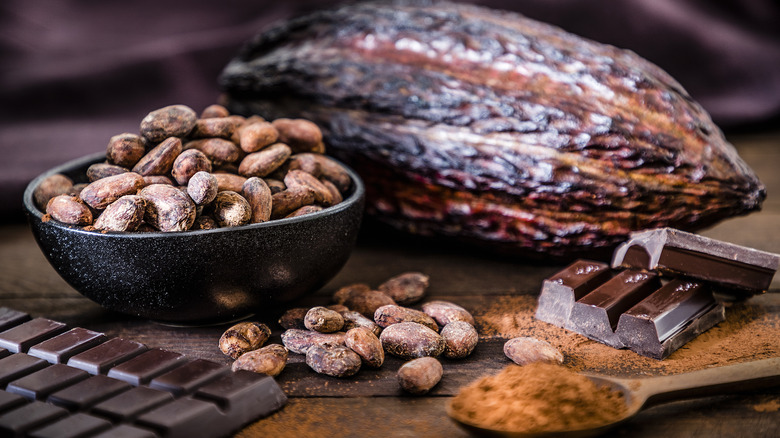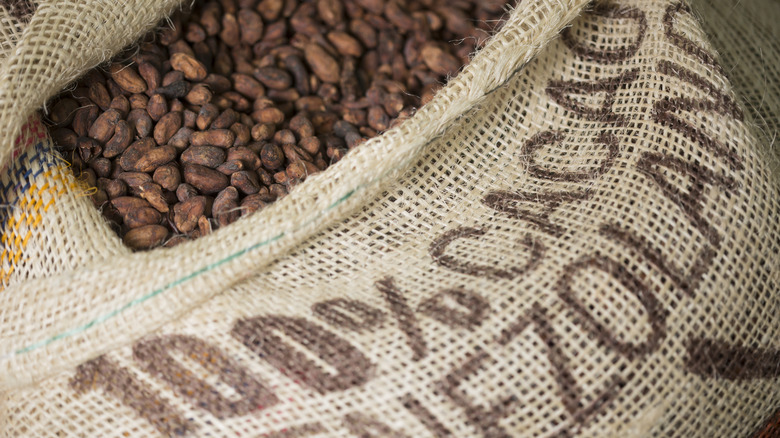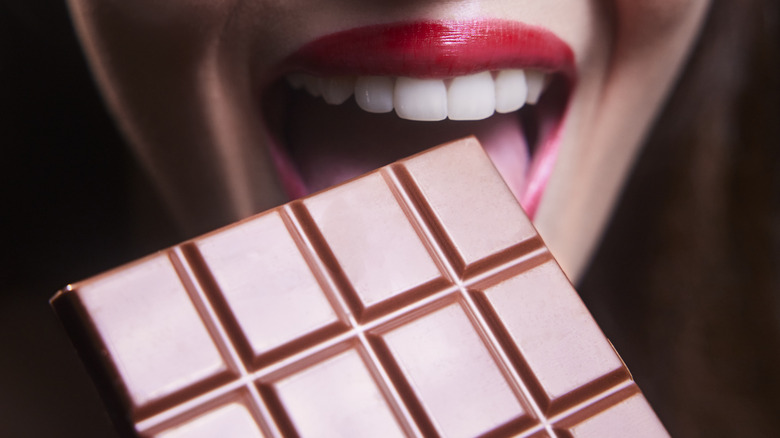Why You Should Always Taste Chocolate Before Baking With It
Revered by the Aztecs and lauded as a food of the gods, chocolate has come a long way from its bitter roots. Three basic categories of chocolate exist, including white, dark, and milk, but within those are several subcategories spanning everything from blonde to semi-sweet. Tasting the chocolate you use to bake will help you decide which level of sweetness to choose from. Add to that the chocolate's origin (or terroir) — where the cacao in a bar or chip is grown — and you have a world of flavors that all directly impact the outcome of any item you're attempting to bake.
Chocolate connoisseurs spend their days tasting chocolate from around the globe, but you can find the right flavor profile for any recipe by understanding the fundamentals of how chocolate is made and by learning the best way to taste before you bake. From its origin to its texture, chocolate is a complex ingredient that's worth learning more about before attempting that next recipe.
Origin is important but not the deciding factor
Most cocoa beans are grown within twenty degrees of the Equator, making West African countries the biggest cocoa producers. Peru, Mexico, and Venezuela also produce cacao beans, though most of the products found on North American shelves come from Africa. Finding chocolate grown elsewhere (such as Vietnam and the United States — mainly Florida or Hawaii) is possible, though these products are rare.
Weather and the environment have an impact on the flavor of cacao beans, with extreme temperatures changing the way that cocoa grown in some areas tastes. However, as noted by chocolate sommelier and master chocolatier, Geoseph Domenichiello, how the chocolate is produced matters most.
Some chocolatiers refine raw beans for days, while others prefer a shorter refinement period. Chocolate refinement time will change the overall taste of a bean with a longer refining time resulting in a smoother taste. Unfortunately, most finished products do not list production details, but you can rely on your tastebuds to choose the best chocolate for your recipe.
How to taste chocolate
"If you can, taste your chocolate before baking with it," Jen Yee, executive pastry chef of Atlanta-based Hopkins and Company, recently told Food and Wine magazine. "Some have fruitier tones, while some are more vanilla-caramel forward."
While detecting notes of caramel may be second nature to a skilled pastry chef, most home bakers may not pick up on those notes quite as quickly. According to the Ghirardelli Chocolate Company, the best way to taste chocolate is not to taste it at all — the company recommends rubbing a piece of chocolate between your fingertips to see if you can detect a specific scent.
From there, take note of the way a piece of chocolate melts (or doesn't!) while letting it sit on your tongue. You might notice that many chips are manufactured to retain their shape and melt less thanks to reduced cocoa butter when compared to bar chocolate. This may or may not be how you want your cake or other items to taste and feel. Ghirardelli recommends tasting at most six types of chocolate at a time to avoid overwhelming your senses.
As with most things, practicing your chocolate-tasting skills makes progress, and a well-stocked and sampled chocolate pantry will yield the perfect bake.


